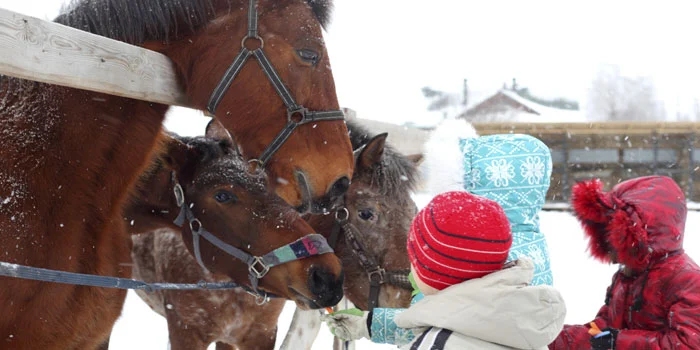10 Ways to Prepare Your Horse Farm for Winter


As Old Man Winter approaches, now’s the time to prep your horse farm for the onslaught of sleet, snow, mud and cold. Add these 10 to-dos to your list.
Professionals say that horses should be fed about 2 percent of their body weight in hay or forage per day. That’s about 600 pounds of hay per month for a 1,000-pound horse. Store extra hay in a clean, dry and convenient area so that if you get snowed in, you’ll have enough on hand to keep your horses fed.
Before an emergency hits, outfit your home and barn with essential supplies, including flashlights, extra batteries, fuel for generators, a cell phone car charger and a battery-powered radio. Consider battery-powered headlamps so you can perform chores hands-free in a power outage.
Winter is hard on horse tack. Before the cold sets in, give it a thorough cleaning and conditioning. It’s also a good idea to take pictures of it for insurance purposes.
Your horses will likely spend more time in their stalls, and it’s important their bedding stays dry. If you expect water runoff from rain or snow, consider using more absorbent types of bedding, such as pelleted straw.
The lighting both outside your barn and inside your stalls should be bright enough to take care of your horses during winter’s darker days. This helps ensure a safe environment for you and any boarders. Outdoor lighting can also help keep critters away.
If your horses wear blankets inside, first, make sure they fit; second, make sure they’re clean, dry and in good shape for the winter. Check for signs of mold and mice and replace any blankets that don’t pass muster.
Before the snow falls, mow your pasture one last time, but not too closely — keep it at 4 inches or more — so you don’t damage it and slow growth in the spring. If you bring your horses in for the winter, drag the manure in the pasture to allow it to decompose. You may also want to create a special outdoor winter enclosure for your horses.
No one likes rooting around in the cold, trying to find what they’re looking for. Before winter sets in, line up the tools you’ll need in a convenient spot. And complete a maintenance check of all your equipment, including tuning up your power equipment and parking it for easy access, and changing or rotating tires and adding snow chains as needed. Consider using a trickle charger for tractors and other large implements. And stock up on supplies like antifreeze, belts and hoses.
Now’s the time to service your automatic waterer for your horse farm. Horses can’t get enough water by eating snow, and they generally drink less when the water is very cold. If your water tends to freeze, a stock tank heater or heated stall buckets may do the trick.
Contact your agent to make sure you have the right insurance coverage for your horse farm operation. Standard homeowners policies may not cover events like losing your horses to fire, lightning or collision. And you may be exposed to financially catastrophic liability claims. Customized insurance can help you protect your horses and your operation.
Protect your farm or ranch year-round. Find a Farm Bureau agent today!